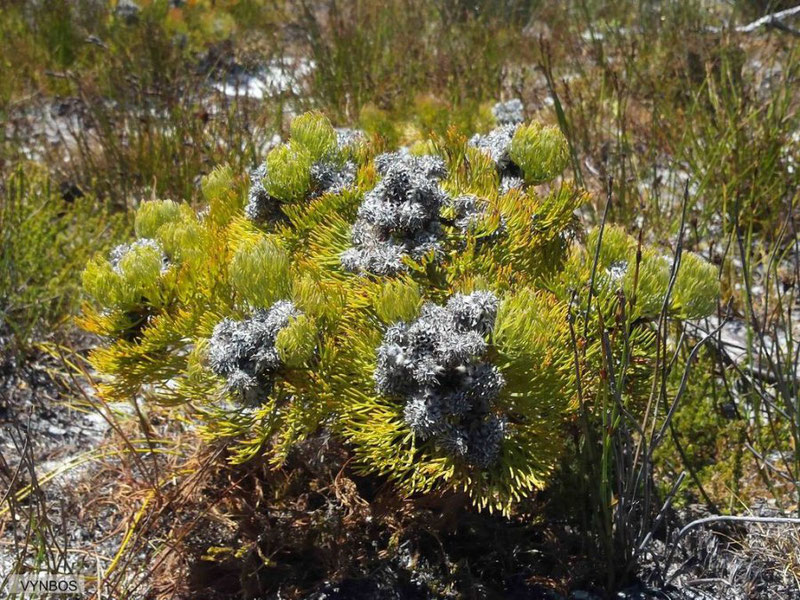Serruria glomerata
 Image: Chris i Naturalist 2018
Image: Chris i Naturalist 2018
Description
An attractive round shrub of spiny upright leaves about 0.5m tall and wide and shiny cream coloured flower balls.It occurs in sandy acid well-draining soil in full sun.
Flowers appear in August to October and are pollinated by insects and dispersed and safely stored away from fire underground by ants.
Quick and easy to grow but short lived as they need replacing after a few years. Do not disturb roots as vulnerable to root fungus.
Propagate from seed in late summer or Autumn, or from cutting. Seeds are triggered from temperature difference in day and night so simulate these autumn difference if out of season. Treat seeds with fungicide. Take tip or heal cutting in Autumn or spring. Grow in acid sandy soil (river sand, pine bark and loam mix).
Propagation instructions - cuttings
Take tip or heel cuttings in spring or autumn. Use a rooting hormone suitable for semi-hardwood cuttings and root in a well-aerated soil mixture in a propagation unit with underbench heating of ± 24°C and overhead mist. Rooting should occur from 5 weeks. After rooting, harden off for 4 weeks and then plant into pots or bags.
Grow Serruria glomerata seedlings and cuttings in a well-drained (sandy), acidic soil mix suitable for fynbos, e.g. a mixture of river sand, composted pine bark and loam. Do not feed with strong fertiliser, preferably feed with more frequent small doses of an organic liquid fertiliser. Plant out into the garden in autumn to allow the young plant to become established during the cool, wet winter before the onset of the hot, dry summer.
Propagation instructions - seeds
Serruria glomerata can be propagated by seed or cuttings. Collect seed from a mature flowerhead, either by repeated visits, or cover the flowerhead with a light cloth or stocking to catch the seeds as they drop, or remove the head after the last flowers have finished flowering and place in a tray in the drying room. Sow in late summer or early autumn when the days are warm but the nights are cold, as this temperature difference initiates germination. Alternatively, the seeds can be exposed to alternating periods of high and low temperatures to mimic the Cape autumn temperatures. Use a well-drained, sterile soil mix, cover lightly and place in a warm spot. Treat the seed with a fungicide that prevents both pre- and post-emergence damping off. Transplant the seedlings as soon as they are large enough to handle.
Sources and references
Scientific name
Serruria glomerata
Common name(s)
Cluster Spiderhead
